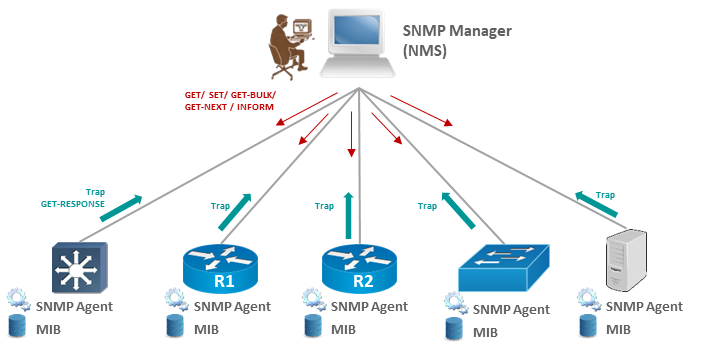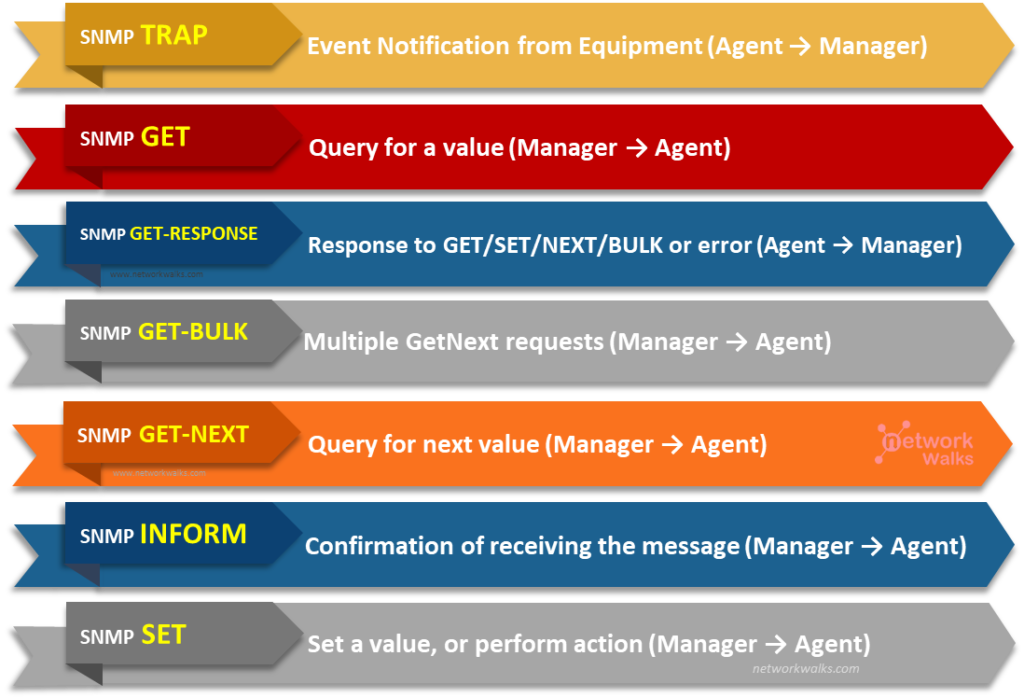
What is SNMP?
SNMP (Simple Network Management Protocol) is a Layer-7 protocol for collecting and organizing information about managed devices on IP networks and for modifying that information to change device behavior. It allows devices to communicate even if the devices are different hardware and run different software.
There are two major types of devices in SNMP, they are
Managed devices which are devices being managed using SNMP and
Network Management Station (NMS) which could be a device or devices managing the managed devices. It could also be seen as the SNMP server.
Features of SNMP (Simple Network Management Protocol)
SNMP is a Layer7 protocol (Application Layer), with a defined standard of RFC1155, RFC1157. The purpose of SNMP is for network management and has three main versions (SNMPv1, SNMPv2c, SNMPv3). SNMP agent receives requests/responses on UDP port 161, and notifications on port 162.

Operations in SNMP
There are three basic operations that are used in SNMP:
- Managed devices can alert the NMS events
- NMS can ask the managed devices for info about their present state
- NMS can inform the managed devices to modify aspects of their configuration
SNMP (Simple Network Management Protocol) Components
SNMP components consist of SNMP Manager, SNMP Agent, and MIB. Below is an illustration of them:

SNMP Message Types
The following are the SNMP message types we have:

SNMP Configuration Example on Cisco
The following shows how SNMP is configured:

R1(config)#snmp-server community cisco1 ro …(Enable SNMP & create a community string with Read-Only Access)
R1(config)#snmp-server host 12.12.12.99 version 2c cisco1 …(Send all SNMP to this host/NMS)
R1(config)#snmp-server enable traps …(Enable SNMP Traps)
-End-
You might also be interested in our free Online Quizzes on all IT topics including Cisco CCNA, Cyber Security, Python Programming, Linux & Ethical Hacking:
Free Online Quizzes (Best for Cisco CCNA, Huawei HCNA, N+)
You can also view free study notes (Cheat sheets) for long term memory:
Networkwalks Summary Cheatsheets





